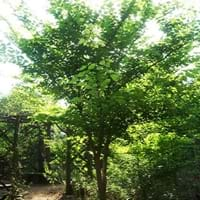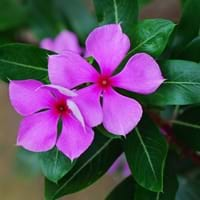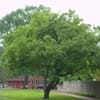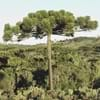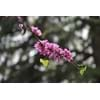Life Span
Perennial
Perennial
Type
Tree
Tender Perennial
Origin
North America, Northeastern United States, Mid-Atlantic United States, North-Central United States, Central United States, South-Central United States, Canada
Madagascar
Types
Not Available
Purple vinca, Vinca, cherry red, strawberry color
Number of Varieties
Not Available
Habitat
Woodland Garden Canopy
Subtropical climates, Tropical regions
USDA Hardiness Zone
3-11
9-15
Sunset Zone
Not Available
A1, A2, A3, H1, H2, 1a, 1b, 2a, 2b, 3a, 3b, 4, 5, 6, 7, 8, 9, 10, 11, 12, 13, 14, 15, 16, 17, 18, 19, 20, 21, 22, 23, 24
Habit
Upright/Erect
Clump-Forming
Minimum Width
Not Available
Flower Color
Tan, Sandy Brown
Pink, Magenta, Rose
Flower Color Modifier
Bicolor
Bicolor
Fruit Color
Green, Sandy Brown
Not Available
Leaf Color in Spring
Green
Dark Green
Leaf Color in Summer
Green, Dark Green
Dark Green
Leaf Color in Fall
Yellow, Green
Dark Green
Leaf Color in Winter
Not Available
Dark Green
Leaf Shape
oblong or obovate
Oval
Plant Season
Not Available
Spring, Summer, Fall, Winter
Sunlight
Full Sun, Partial Sun, Partial shade
Full Sun, Partial Sun
Type of Soil
Clay, Loam, Sand
Loam, Sand
The pH of Soil
Neutral, Alkaline
Neutral, Alkaline
Soil Drainage
Average
Well drained
Bloom Time
Early Spring, Spring
Indeterminate
Tolerances
Not Available
Pollution, Drought, Salt
Where to Plant?
Ground
Container, Ground, Pot
How to Plant?
Seedlings
Seedlings, Stem Planting, Transplanting
Plant Maintenance
Medium
Medium
Watering Requirements
Average Water Needs
Keep ground moist, Needs 2-3 times watering per week, Requires watering in the growing season, Water Deeply
In Summer
Lots of watering
Lots of watering
In Spring
Moderate
Moderate
In Winter
Average Water
Average Water
Soil pH
Neutral, Alkaline
Neutral, Alkaline
Soil Type
Clay, Loam, Sand
Loam, Sand
Soil Drainage Capacity
Average
Well drained
Sun Exposure
Full Sun, Partial Sun, Partial shade
Full Sun, Partial Sun
Pruning
Remove damaged leaves, Remove dead branches, Remove dead leaves
Prune ocassionally
Fertilizers
Any balanced general purpose fertilizer
All-Purpose Liquid Fertilizer
Pests and Diseases
Blackspot mold
Botrytis Blight, Canker, Crown rot, Pythium rot, Root rot
Plant Tolerance
Drought
Drought
Flowers
Insignificant
Showy
Flower Petal Number
Not Available
Single
Showy Foliage
Insignificant
Yes
Foliage Texture
Medium
Medium
Foliage Sheen
Matte
Glossy
Attracts
Beetles, Birds
Butterflies
Allergy
Miscarriage, Rash
Intestinal gas, Nausea, Vomiting
Aesthetic Uses
Not Used For Aesthetic Purpose
Beautification, Showy Purposes
Beauty Benefits
Beautiful Skin, Heals Damaged Hair, Strong, beautiful hair
Not Available
Environmental Uses
Air purification
Air purification
Medicinal Uses
Demulcent, Diuretic, Expectorant, Nutritive
Chest pain, High blood pressure, Inflammation, Sore throat, Tooth ache, Wounds
Part of Plant Used
Fruits, Inner Bark, Leaves
Whole plant
Other Uses
Chewed as a thirst quencher, Tea-like beverage can be brewed, Used as a thickener in soups, Used to make a twine
Decoration Purposes, Showy Purposes, Used as Ornamental plant
Used As Indoor Plant
No
Yes
Used As Outdoor Plant
Yes
Yes
Garden Design
Shade Trees
Bedding Plant, Container, Hanging Basket, Mixed Border, Tropical
Botanical Name
ULMUS rubra
CATHARANTHUS roseus
Common Name
Slippery Elm
Madagascar Periwinkle, Periwinkle, Vinca
In Hindi
Slippery Elm
Vinca
In French
Slippery Elm
Vinca
In Spanish
olmo resbaladizo
Vinca
In Greek
Slippery Elm
Vinca
In Portuguese
Slippery Elm
Vinca
In Polish
Slippery Elm
Vinca
In Latin
Lubricus Elm
Galium
Phylum
Magnoliophyta
Magnoliophyta
Class
Magnoliopsida
Magnoliopsida
Order
Urticales
Gentianales
Family
Ulmaceae
Apocynaceae
Clade
Angiosperms, Eudicots, Rosids
Angiosperms, Asterids, Eudicots
Tribe
Not Available
Not Available
Subfamily
Not Available
Not Available
Number of Species
Not Available
Not Available
Importance of Slippery Elm and Vinca
Want to have the most appropriate plant for your garden? You might want to know the importance of Slippery Elm and Vinca. Basically, these two plants vary in many aspects. Compare Slippery Elm and Vinca as they differ in many characteristics such as their life, care, benefits, facts, etc. Every gardener must at least have the slightest clue about the plants he wants to plant in his garden. Compare their benefits, which differ in many ways like facts and uses. The medicinal use of Slippery Elm is Demulcent, Diuretic, Expectorant and Nutritive whereas of Vinca is Chest pain, High blood pressure, Inflammation, Sore throat, Tooth ache and Wounds. Slippery Elm has beauty benefits as follows: Beautiful Skin, Heals Damaged Hair and Strong, beautiful hair while Vinca has beauty benefits as follows: Beautiful Skin, Heals Damaged Hair and Strong, beautiful hair.
Compare Facts of Slippery Elm vs Vinca
How to choose the best garden plant for your garden depending upon its facts? Here garden plant comparison will help you to solve this query. Compare the facts of Slippery Elm vs Vinca and know which one to choose. As garden plants have benefits and other uses, allergy is also a major drawback of plants for some people. Allergic reactions of Slippery Elm are Miscarriage and Rash whereas of Vinca have Intestinal gas, Nausea and Vomiting respectively. Having a fruit bearing plant in your garden can be a plus point of your garden. Slippery Elm has no showy fruits and Vinca has no showy fruits. Also Slippery Elm is not flowering and Vinca is not flowering . You can compare Slippery Elm and Vinca facts and facts of other plants too.
